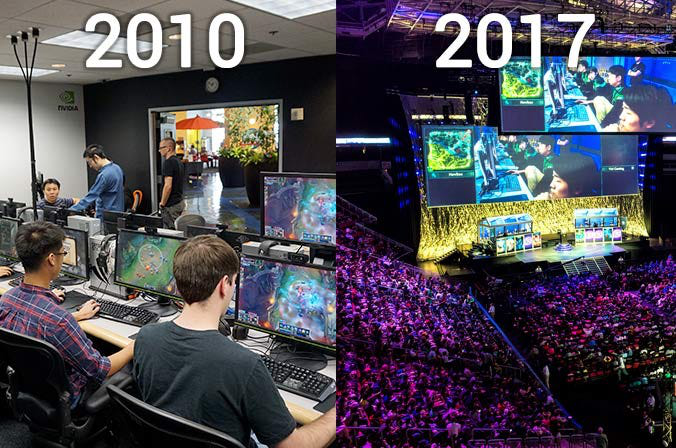Esports, short for electronic sports, has emerged from humble beginnings to become a global phenomenon, captivating millions of players and spectators around the world. The roots can be traced back to the early days of video gaming, where competitive gaming competitions first took shape in arcades and gaming conventions. Let’s take a journey through the history of esports and explore how it has evolved over the years.
Early Beginnings (1970s-1980s)
The origins of esports can be traced back to the late 1970s and early 1980s, with the rise of arcade gaming and the advent of competitive gaming tournaments. Games like Space Invaders, Pac-Man, and Donkey Kong were among the first to attract competitive players who vied for high scores and bragging rights in arcade halls.
Golden Age of Arcade Gaming (1980s-1990s)
The 1980s and 1990s marked the golden age of arcade gaming, with the introduction of iconic titles such as Street Fighter II, Mortal Kombat, and Tekken. These fighting games became the focal point of competitive gaming tournaments, drawing large crowds and sparking the emergence of organized esports events.
The Rise of LAN Parties and PC Gaming (1990s)
With the proliferation of personal computers and the advent of local area network (LAN) technology, competitive gaming moved beyond the confines of arcades and into the realm of PC gaming. LAN parties, where players gathered to compete against each other in multiplayer games like Quake, Counter-Strike, and StarCraft, became a popular phenomenon, laying the groundwork for modern culture.
Professionalization and Organized Competitions (2000s)
The 2000s saw the professionalization of esports, with the establishment of organized competitions, professional gaming teams, and dedicated esports leagues. Major gaming tournaments such as the Cyberathlete Professional League (CPL), Electronic Sports World Cup (ESWC), and World Cyber Games (WCG) emerged as flagship events, attracting top players and substantial prize pools.
Streaming Platforms and Online Broadcasting (2010s)
The advent of streaming platforms like Twitch and YouTube Gaming revolutionized the esports landscape, enabling players to broadcast their gameplay to a global audience in real-time. This accessibility and visibility propelled esports into the mainstream, attracting sponsorships, endorsements, and media coverage from major brands and media outlets.

Conclusion
In conclusion, the history of esports is a testament to the evolution and growth of competitive gaming from its humble beginnings in arcades to its current status as a global phenomenon. With its rich heritage, diverse array of games, and passionate community of players and fans, continues to push the boundaries of entertainment and redefine the way we experience competitive sports in the digital age.
